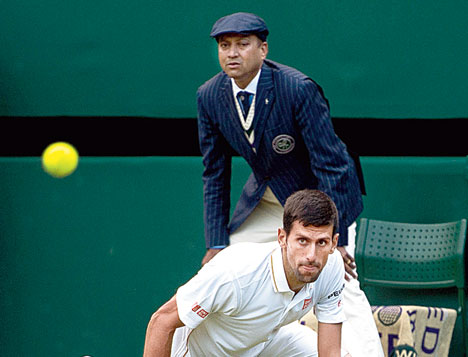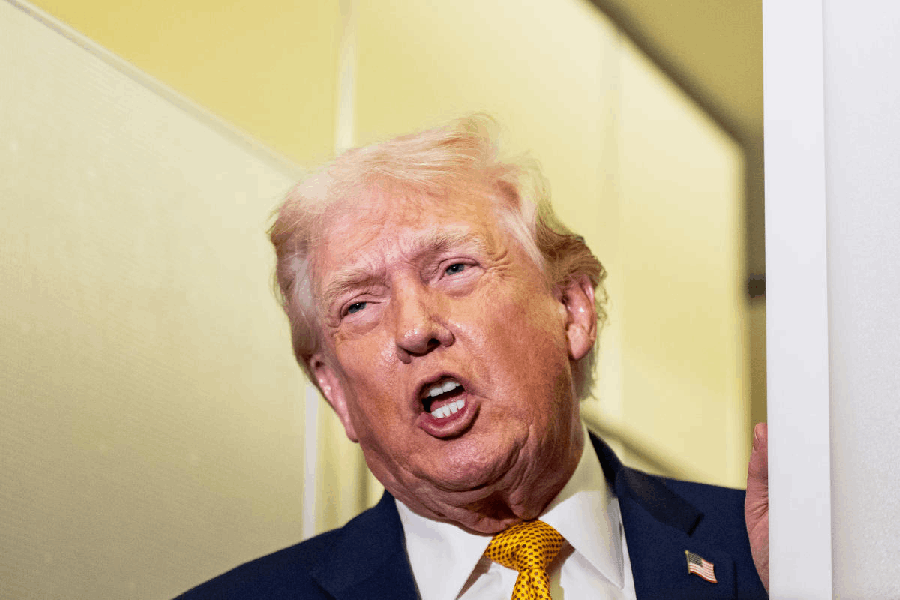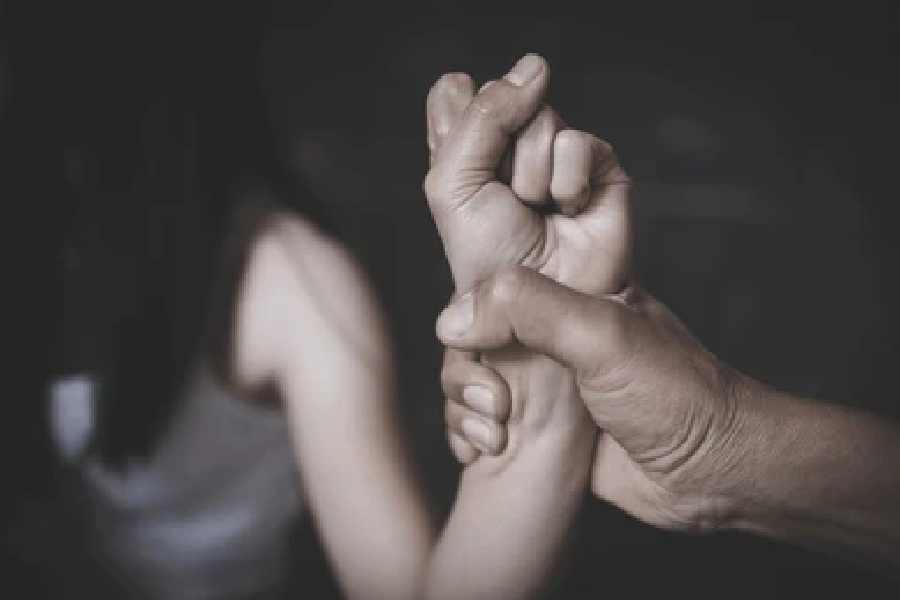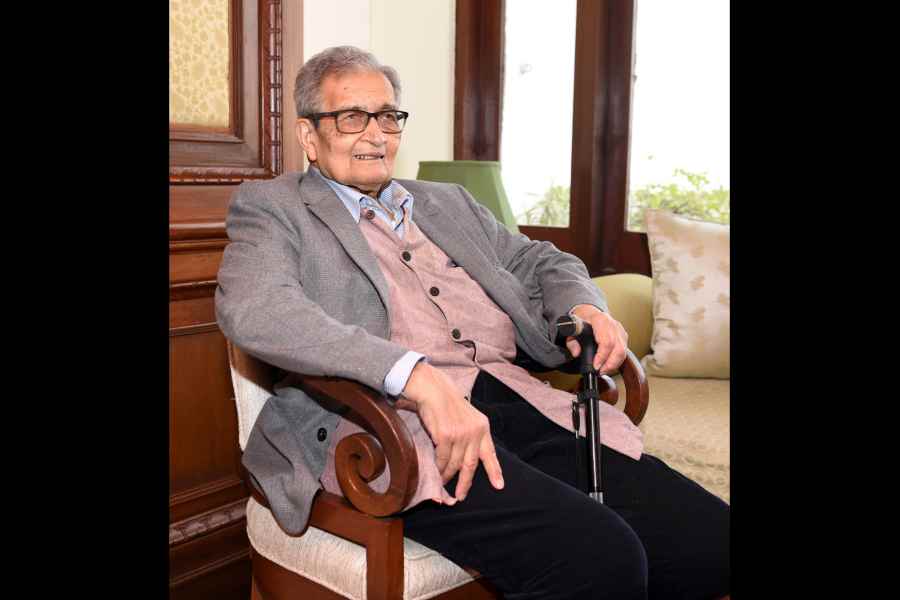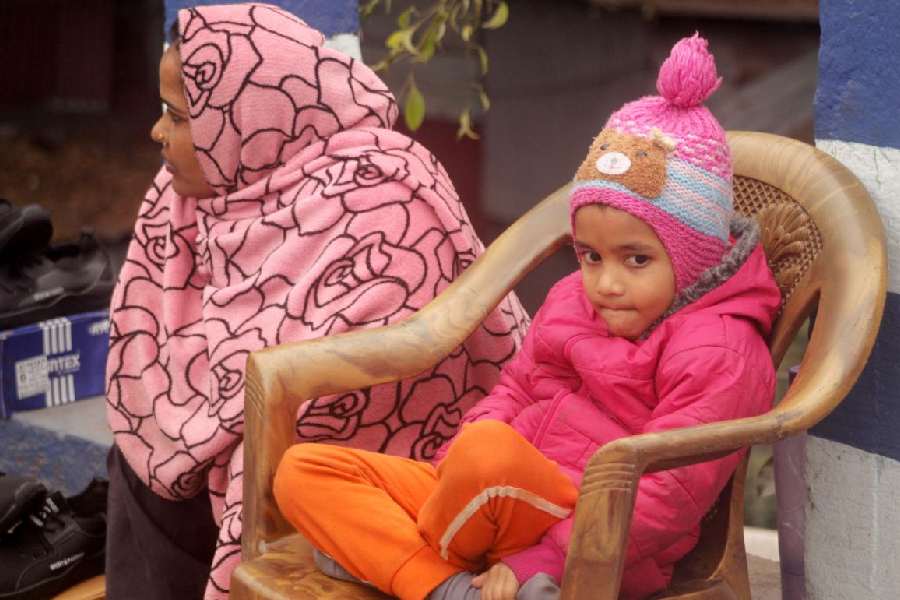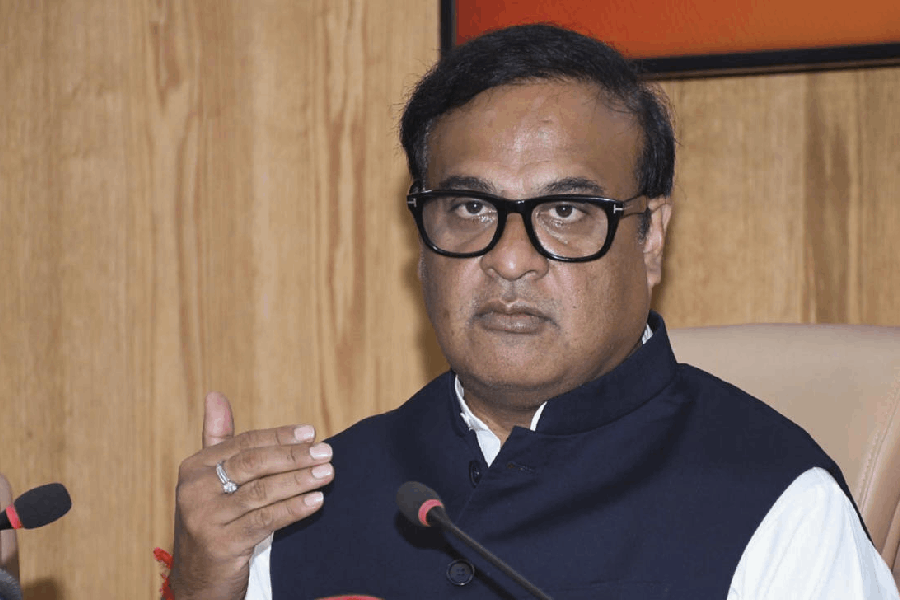
You may have spotted him propped up on the tall chair along the net or standing along the lines at a tennis Grand Slam, keeping a close watch on a Roger Federer or a Serena Williams, and wondered who he was. That’s Abhishek Mukherjee, a Silver Badge international referee and a Bronze Badge international chair umpire from Bengal, who has officiated in 36 Grand Slams, which includes nine finals.
The 40-year-old from Bally, Howrah, will bowl you over with his humility. When we dropped by for this chat, we found him waiting for us near the gate of his residential complex. The flat looked simple. His journey is anything but.
Excerpts from the chat...
TT to tennis
I was born in Muzaffarpur and grew up in Patna till the age of 14. My father was a medicine distributor there. We came back to Calcutta to live in Uttarpara when I was 14.
We are three brothers. I am the youngest. We were all inclined towards sports. When I was five or six, I was introduced to table tennis by my elder brother. I was actually very good in it and became a state champion when I was seven or eight, in the U-12 category. They used to call me a prodigy.
My second love was tennis. I used to love watching Ivan Lendl and Boris Becker. In Bihar, tennis’r eto chorcha chhilo na. When I returned to Calcutta, I took up tennis and got so involved in it that table tennis took a back seat. Once I started playing the circuit, I got the same success as I had in table tennis. I started playing national tournaments.
When I was 19 or 20, I was diagnosed with cancer (Hodgkin’s disease) and life as I knew it, changed forever. I went through treatment at Apollo Hospitals in Chennai. My uncle, who was a doctor in the US, came down. My family was devastated. I was looking forward to a lot of things in my life and everything fell apart.
Finally, it became a battle for survival, but I believed I would live. I was lucky to get bone marrow from my own brother. In hindsight, I think I could fight it because I was a sportsman.
It took me around two-three years to recover. I was among the top five in junior tennis in Bengal when this happened. From that, I became virtually no one in the circuit. The doctor told me I had to stop all kind of physical exertion. Earlier I would wake up at 5am and go running. I used to play at SAI.

Being a ballboy
During my tennis stint in Calcutta, there was a Davis Cup tie played here — India vs Sweden. It was 1995-96. I happened to be a ballboy for that… I was only 16. This was at Calcutta South Club. I had started playing at the state level and all the talented kids were given an opportunity to become ball kids to get up close to the players and see how they played. Leander Paes, Ramesh Krishnan, Jonas Bjorkman played. That was my introduction to being on court other than playing tennis. I saw there were a couple of umpires from Britain and Germany. They were very inspiring for all of us. We were all in awe of them. That experience stayed with me.
To be a ballkid at that age meant I could be close to the players and learn how they handled situations, strategises, the dialogue that happened between the coaches and the players.
Another opportunity to be a ballkid came my way a couple of years later. It was for the 1997 Davis Cup in Calcutta and I was so excited. During the tournament, a couple of line umpires pulled out for some reason all of a sudden, and I was asked if I would like to step in. I thought of giving it a go.
Chair umpires are the ones who sit in the chairs and do the scoring. Then there are people behind the line, standing. They call ‘in’ and ‘out’ and there are nine of them. They assist the chair umpires. Every line has one dedicated umpire.
This opportunity would mean I could interact with the star umpires from a closer proximity. I put in my name and became a line umpire and did pretty well. I picked up a lot of things. That’s how my umpiring career started. It was a big deal for me… such a young boy... 18... and becoming an official!
I was also nervous... whether they would say ‘yes’ or ‘no’ to my decisions or whether the top seeds would get angry. These were the apprehensions. At the end of the day I was fearless, made those calls and got appreciated.
I never thought I would become an umpire. My intention was to be on the court and contribute either as a player or a ballboy. I was a performer. I didn’t want to be a spectator and watch matches.


The switch to umpiring
I was cured in 2002 and wanted to stay with sports. I was too young to become a coach. So, I decided to take up umpiring along with finishing my studies. I graduated in 1998 with commerce from Patna University.
Making the switch (to umpiring) was a difficult decision. I had written a Level 1 exam (a national-level exam) in 1997 when I realised that I was good at umpiring too. In 1999, ITF (International Tennis Federation) scheduled an exam in India… that kind of an exam used to happen less in India back then. It was ITF Level 2. Those who pass it, get a White Badge.
DID YOU KNOW?
- As an official, you cannot drink on site at any time.
- Your phone has to be switched off and kept away in the locker during the match.
- You cannot really interact with the players.
AN UMPIRE’S NIGHTMARE
Players like Nick Kyrgios and Fabio Fognini, who are difficult.
FAVE UMPIRES
Mohamed Lahyani and Carlos Ramos.
ABHISHEK’S GOLDEN RUN
London Olympics final, where Serena Williams won a gold medal.
Roger Federer Grand Slam finals… three Wimbledon finals in the last four years (2014, 2015 and 2017), US Open finals (2008 and 2009).
US Open women’s finals (2008 and 2009).
Australian Open men’s finals (2011 and 2012).
French Open mixed doubles final (2016).
Chair umpire in the mixed doubles finals of the Commonwealth Games.
Chair umpire in Asian Games finals, 2014.
Abhishek has been a chair umpire at more than 2,000 matches.
The examiners came from London, Australia and various places. Both Level 1 and 2 are organised by the ITF and the second level is the international level. It was held in Bombay.
I was ailing at that time and my initial treatment happened in Bombay. This exam coincided with one such scheduled check-up. Otherwise no one would have taken me to Bombay when I was so ill. I hadn’t told my parents about this exam! Getting to sit in this exam is not easy. It is a three-day exam. Somehow I managed to write that exam. And I passed… I was in the top two or three in Asia. This gave me a lot of confidence that I had something in me.
Later I studied sports management at Calcutta University, an IISWBM course. Ours was the first batch. I passed out in 2004 with a first class. There was a big question mark as to whether I would at all be okay to officiate matches. Even as an umpire, you have to travel a lot. That year (2004) too was a struggle as I wasn’t getting too many opportunities.
The big WI would religiously apply to every Grand Slam from 1997-98 to work in the tournaments as an umpire. In 2005, I got my first assignment in Wimbledon. I got an email from Wimbledon that I had been selected for the qualifying round of the tourney. Every big tournament has a qualifying round followed by the main draw. Everyone in the family was very excited! I was the first person to become a Wimbledon umpire from Bengal. That was my second foreign trip. My first international trip was to Colombo in 2000 to do chair umpiring for a Davis Cup match.
But the problem in Wimbledon is you don’t get paid that much in a qualifying round. You had accommodation and meals to take care of. But this was too good an opportunity to pass up. My financial condition was not very sound at that time, but I managed to get some funds and made it to the Wimbledon.
It was a great feeling, a dream come true. I felt, maybe I belong to this place. I did really well. I did five days of tournament… from 10am-5pm. There is a rotation policy and everyone is evaluated by senior umpires. I got decent marks.
In 2007 I was in two minds. Funds were an issue and I had to take a call about how long to drag on and how long should I wait for the big break and whether I should switch to another job. It was beginning to get a little tedious. But then I did go for the 2007 Wimbledon.

...and life changed
On the second day, I was called to the chief umpire’s office. I was very worried… I was thinking if I had done something wrong. He asked me what I was doing the following Monday. I said I was scheduled to fly back home. He asked me whether I’d be able to do the Wimbledon main draw! (Laughs) I couldn’t believe my ears! I was speechless.
It was an emotional moment. I was waiting for this moment… yes, I can do it! My first call was back home. I was later told that my evaluation had been consistent. Out of so many umpires, a couple of people got promotion. I had got my break. I was taken in as a line umpire. Life changed that Tuesday in 2007.
I officiated an Andy Murray match. To work as a line umpire in any Grand Slam’s main draw is a huge achievement. There are 15,000-20,000 people applying for the post and only 60-70 people make the cut. It was unbelievable for me. This gave me the confidence.
In December (2007) I got an email saying I had got into Australian Open… January 2008. I was back at the Wimbledon main draw in 2008. The main draw of the US Open followed. I also went to Beijing Olympics in 2008… this too was completely unexpected and a very big opportunity.
The dream run continues
I wrote another exam in 2010 to become an international chair umpire. It is called the Bronze Badge. I passed it with flying colours and became a chair umpire. Then I went for the 2010 Asian Games, 2014 Asian Games, 2010 Commonwealth Games, 2012 London Olympics…. This Australian Open (2018) was my 36th Grand Slam. I have been going to all four Grand Slams for the last four years — Australian Open, French Open, Wimbledon and US Open.
Of these 36 Grand Slams, I have done nine Grand Slam finals as a line umpire.
I wrote an exam in 2012 to become a match referee. This happened in Hong Kong. I passed that too. I got a service award from Australian Open this year for completing 10 years in a row. I am also a review official at the Australian Open.

Picture: B. Halder
A wish…
I want to umpire a match in Wimbledon Centre Court as a chair umpire.
ABHISHEK’S POP PICKS
Temperament and attitude: Rafael Nadal. He’s got great attitude, very down to earth. He gives a lot of respect to everyone. I chair umpired a Nadal match at the Chennai Open. He is a role model.
Roger Federer, of course. He is the biggest tennis star I have seen. If there are 25,000 people in a stadium, all eyes would be on him alone. He is technically so sound and usually very relaxed before a game. Very smart… he picks and chooses his tournaments well.
Leander Paes is very popular. Humble and nice.
Serena Williams is such an athlete! She is aggressive in terms of tennis… that’s why she has been able to dominate that much. Power, speed… amazing!
FROM AN UMPIRE’S EYE... WHAT WE DON’T SEE:
Work ethic. For example, the match starts at 7pm. The players are at the stadium at 11am-noon with their team… physiotherapists, doctors, coach, family. After a light lunch, they hit in the match court, enquire about the weather. Depending on the weather forecast they set the schedule… the homework doesn’t start a couple of hours ago… it starts well in advance.
Last year when Roger Federer won his eighth Wimbledon, he broke down while waiting for the presentation ceremony. His team hoisted his twin sons (Lenny and Leo). After flashing a thumbs up, he broke down. Later we heard that he had promised his kids that he would win it.
—Saionee Chakraborty

